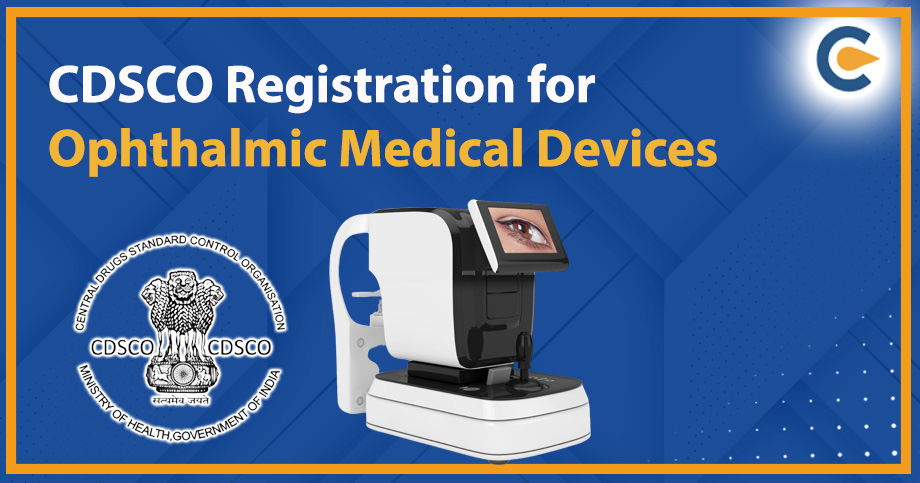India is fast emerging as one of the most influential players in the healthcare sector. Many factors have led to India becoming the hub of affordable healthcare and innovative research and development in the field of medicine and medical devices. The Central Drugs Standards Control Organization or CDSCO, has been established by the Indian Government as the legislative and regulatory body for the management and control of medical devices and pharmaceuticals in India. The CDSCO is headed by the Drug Controller General of India/DCGI and the license is granted by either the State Licensing Authority/the Central Licensing Authority based on the inherent risk of the medical devices. The Drugs and Cosmetics Act, 1940 regulates the sale, distribution, manufacture, import and export of medical devices in India. Medical devices and in-vitro diagnostics must mandatorily obtain requisite licenses from CDSCO and in accordance with the Drugs and Cosmetics Act, 1940 to, be marketed in India. Scroll down to check more information regarding CDSCO Registration for Ophthalmic Medical Devices.
What are Medical Devices?
Medical Devices as defined under the Medical Devices Amendment Rules, 2020, is: “devices used in general medical practice such medical apparatus, instruments, implants appliance, which are either used individually or in combination, and are intended to be specifically applied for human beings or animals and are further intended to obtain the desired function by such means and for such purposes as provided below, but is not intended to meet the primary intended action on human body or animals by any pharmacological or immunological or metabolic means:
- Analysis, prevention, observation, treatment or mitigation of any disease or disorder
- Analysis, observation, treatment, mitigation or support for any injury or disability
- Examination, replacement or alteration or support in findings of the anatomy or a physiological process
- For supporting or sustaining life
- Decontamination of medical devices
- Conception-related equipment and medical devices.”
Medical Devices Rules, 2017 has classified medical devices into four categories based on risk and usability of the medical devices, namely Class-A (low-risk devices), Class-B (low to moderate risk devices), Class-C (moderate to high-risk devices), Class-D (high-risk devices).
Medical devices are also categorized into two more categories for the purposes of registration, namely, notified devices and non-notified devices. There are 37 categories of medical devices which have been notified list which are regulated by the CDSCO. The CDSCO must provide the requisite approval for such devices to be marketed in the Indian market. The non-notified devices are devices which are not mentioned in notified list regulated by the CDSCO. These medical devices are listed on the CDSCO’s official website, and such devices require a No Objection Certificate from the CDSCO to be marketed freely in the Indian market.
What are Ophthalmic Medical Devices?
Ophthalmic medical devices are used in ophthalmology and optometry and include invasive devices, non-invasive devices and implantable devices which help in vision correction, surgery, and diagnosis of various eye diseases. There are about a hundred ophthalmic devices which fall under Class A and Class B devices that are required to be registered under the new licensing regime under the CDSCO in accordance with the Drugs & Cosmetics Act, 1940 and Medical Device Rules, 2017. This means that manufacturers and importers wishing to trade such ophthalmic medical devices in the Indian market need to mandatorily obtain the necessary license under the CDSCO regime. Any person or entity holding a license to manufacture under the Drugs and Cosmetics Act, 1940, can make an application to register and import ophthalmic medical devices in India.
Who Can Apply for CDSCO Registration for Ophthalmic Medical Devices?
The following can apply for CDSCO Registration for Ophthalmic Medical Devices in India:
- A domestic manufacturer: The manufacturer shall file an application under Form MD-3 and license under Form MD-5. For a loan license, the application shall be filed under Form MD-4 and the license under Form MD-6.
For a new medical device, the applicant shall file application form MD-26 and license under Form MD-27 for a manufacturing license. For a manufacturer clinical license, the applicant shall file an application form MD-22 and a license under Form MD-23. For a test license for a manufacturer of a new medical device, the applicant shall file an application form MD-16 and license under Form MD-17.
- A foreign manufacturer with a registered office in India
- A subsidiary of such a manufacturer
- An authorized agent of such a manufacturer
- An importer: The importer shall file application form MD-14 and license under Form MD-15 for an existing medical device.
For a new medical device, the applicant shall file an application form MD-26 and license under Form MD-27 for an import license. For a clinical importer license, the applicant shall file an application form MD-22 and a license under Form MD-23. For a test license for an importer of a new medical device, the applicant shall file an application form MD-16 and license under Form MD-17.
Documents Required for CDSCO Registration for Ophthalmic Medical Devices
The documents required for CDSCO Registration for Ophthalmic Medical Devices to be attached as follows:
- Application form.
- Quality assurance certificate
- ISO 13485 certificate
- Plant master report
- Device master
- CE design certificate
- Marketability certificate from Global Harmonization Task Force
- Certificate from a foreign government or a free sale certificate
- An undertaking as to the accuracy of the information given
The applicant ought to submit the following details under the plant master report and device master file of the medical device.
- Details as to names and addresses of the directors of the company, the address of the manufacturing unit and the registered office.
- A copy of the master file of the manufacturing site
- Details of manufacturing standards followed by the company and copies of any ISO certifications granted to the company with respect to its manufacturing unit
- A comprehensive explanation of the manufacturing process
- Details regarding the name, experience and qualifications of the technical staff involved in the manufacture of the medical device.
- Name of the brand under which the ophthalmic medical device is to be manufactured
- The category the device belongs to and a brief description of the device along with the intended usage, the method of such usage and specific storage conditions of the medical device.
- Details as to any variation in the shape & size of the medical device, along with specifications of the material used.
- Details as to any warnings, adverse effects, and precautions to be taken while using the medical device and a summary indication of any problem which has been previously reported.
- Qualitative and quantitative specifications of the device
- Details as to other equipment, accessories to be used in combination with the medical device and other necessary information for such usage.
- Labelling details as per the Drugs and Cosmetics Act, of 1940
- Details of the facilities to conduct tests in the manufacturing premises
Steps Involved in CDSCO Registration for Ophthalmic Medical Devices
Following are the steps involved in CDSCO Registration for Ophthalmic Medical Devices:
- Identify whether a medical device falls under the notified list or not
As mentioned above, if the medical device falls under the notified list brought forth by CDSCO, it must be mandatorily registered in accordance with the Drugs and Cosmetics Act, 1940 and Medical Device Rules, 2017[1] to be marketed in the Indian market. However, if the medical device does not fall on the notified list, it must obtain a non-objection certificate from CDSCO to be deployed freely in the Indian market.
- Register on the Sugam Portal and Fill out the Application Form
If the ophthalmic medical device falls under the notified list, the applicant or the manufacturer must register on the Sugam portal and fill in the appropriate application form and submit the required documents along with the prescribed fee as mentioned in the portal. The applicant is to submit the registration form on the Sugam portal to the Drugs Controller General of India. For a foreign manufacturer, before such application is filed, an authorized business entity or representative residing in India must be appointed which shall represent the manufacturer during, inter alia, the registration process, inspections, and device approvals. Such authorized representative must hold a license under Form 20B and Form 21B.
- Assessment of Application and Documents
The application and documents submitted shall be scrutinized by the requisite licensing authority. For a new device, a subject expert committee shall be convened to assess the application and the documents submitted. The licensing authority may also ask for clarifications or presentations in case of an error or shortcoming if any and the applicant shall be given the opportunity to provide clarifications.
- Grant of License
After the licensing authority has assessed the application and the documents, and has received clarifications when asked for shall grant the applicant the license. Once the manufacturer or the authorized representative has obtained the license, they can further apply for the importer license.
The average time period expended in obtaining a CDSCO Registration for Ophthalmic Medical Devices is six to nine months. If the Drugs Controller General of India asks for an expert committee audit or a technical presentation, it may take an additional three to six months to obtain the medical device registration.
Validity and Renewal of CDSCO Registration for Ophthalmic Medical Devices
Once obtained, unless the CDSCO Registration for Ophthalmic Medical Devices is cancelled by the Drugs Controller General of India, it shall be valid for a period of 3 years from the date of issuance of such certificate.
The application for the renewal of CDSCO Registration for Ophthalmic Medical Devices must be made nine months before the registration certificate expires. The renewal application must be filed along with the device file and the plant report if there are no changes in them.
Conclusion
The Central Drugs Standards Control Organization or CDSCO, established by the Government of India, mandatorily requires that ophthalmic medical devices, which are now mentioned in the notified list regulated by CDSCO, must be registered in accordance with the Drugs and Cosmetics Act, 1940 and Medical Device Rules, 2017 for such devices to be deployed freely in the Indian market. Manufacturers and importers looking to sell, manufacture, export, import or distribute ophthalmic medical devices in the Indian market must be aware of the process, and legal and regulatory compliances involved and obtain the requisite license from the State Licensing Authority.
Read Our Article: Know whether you are required to Pay Professional Tax or Not?













